A campus in constant evolution
Transforming South Kensington for staff, students, and the public
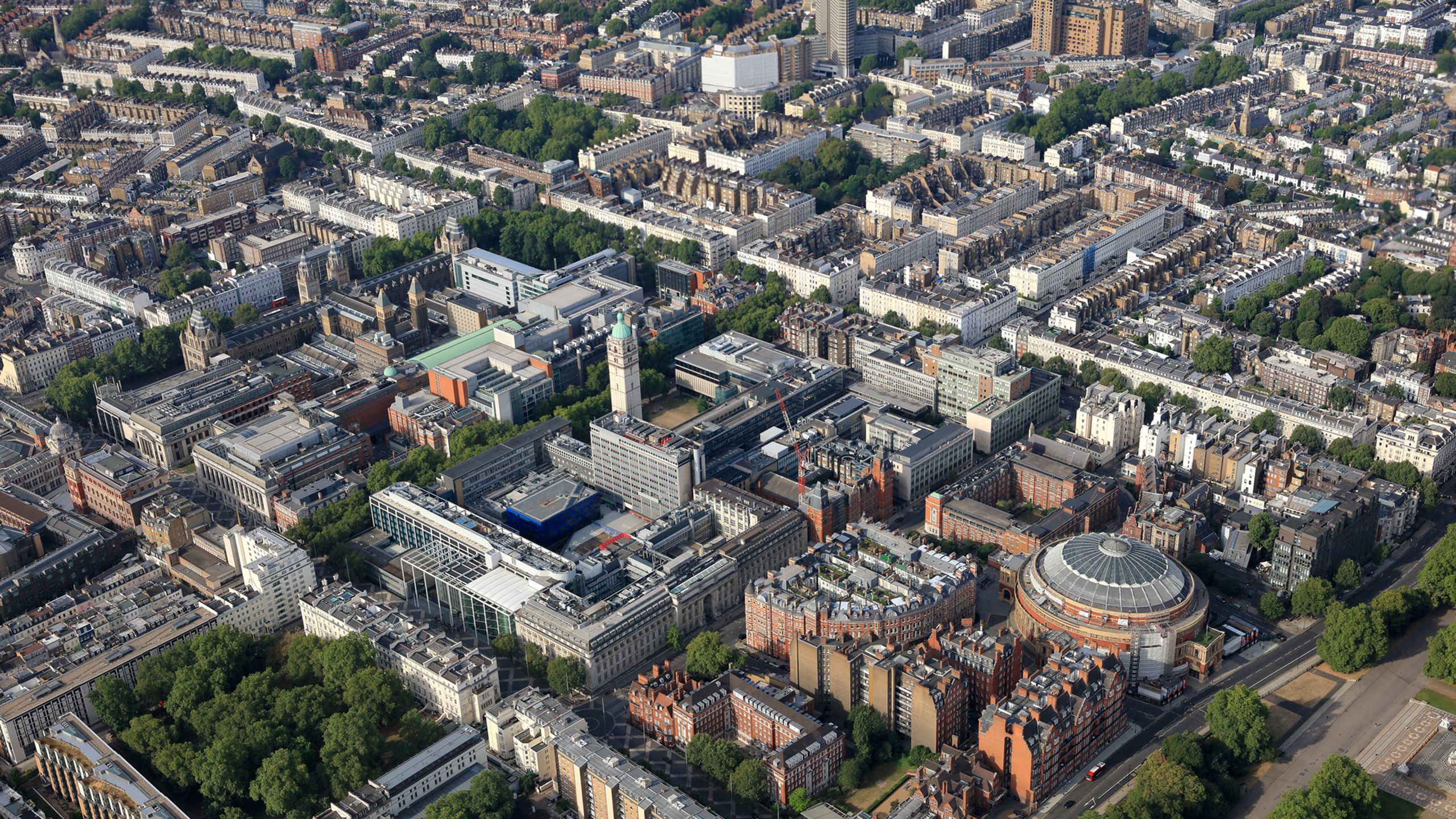
Imperial’s South Kensington Campus is undergoing a transformation, as new projects to make the campus the best it can be for staff and students gather speed.
The College’s vision is to create cutting-edge new research, teaching and gathering spaces with iconic art, architecture and landscaping to draw visitors, students and staff into the heart of the campus.
Philanthropists are playing a critical role in helping Imperial achieve its vision for South Kensington, with donations funding several key projects to enhance the public realm.
A history of growth and change

Since its Victorian and Edwardian origins, the campus has undergone several waves of redevelopment - from its substantial post-war expansion to modern developments such as the Sir Alexander Fleming Building, the Main Entrance, and Imperial College Business School.
These periods of growth have been essential in enabling the College to continue to grow and evolve.
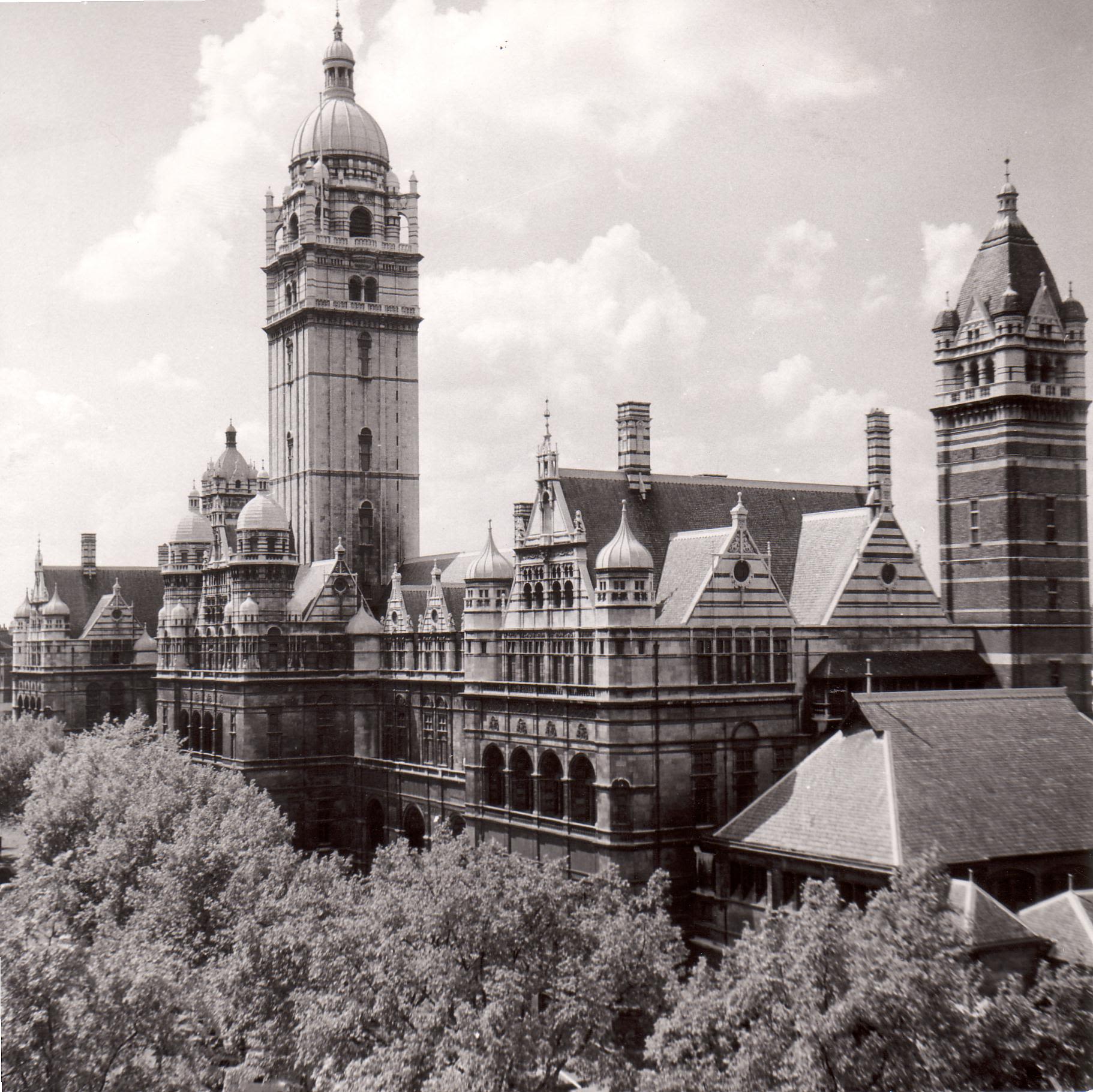
The Imperial Institute, the South Kensington Campus’ forerunner
The Imperial Institute, the South Kensington Campus’ forerunner
Campus ambitions
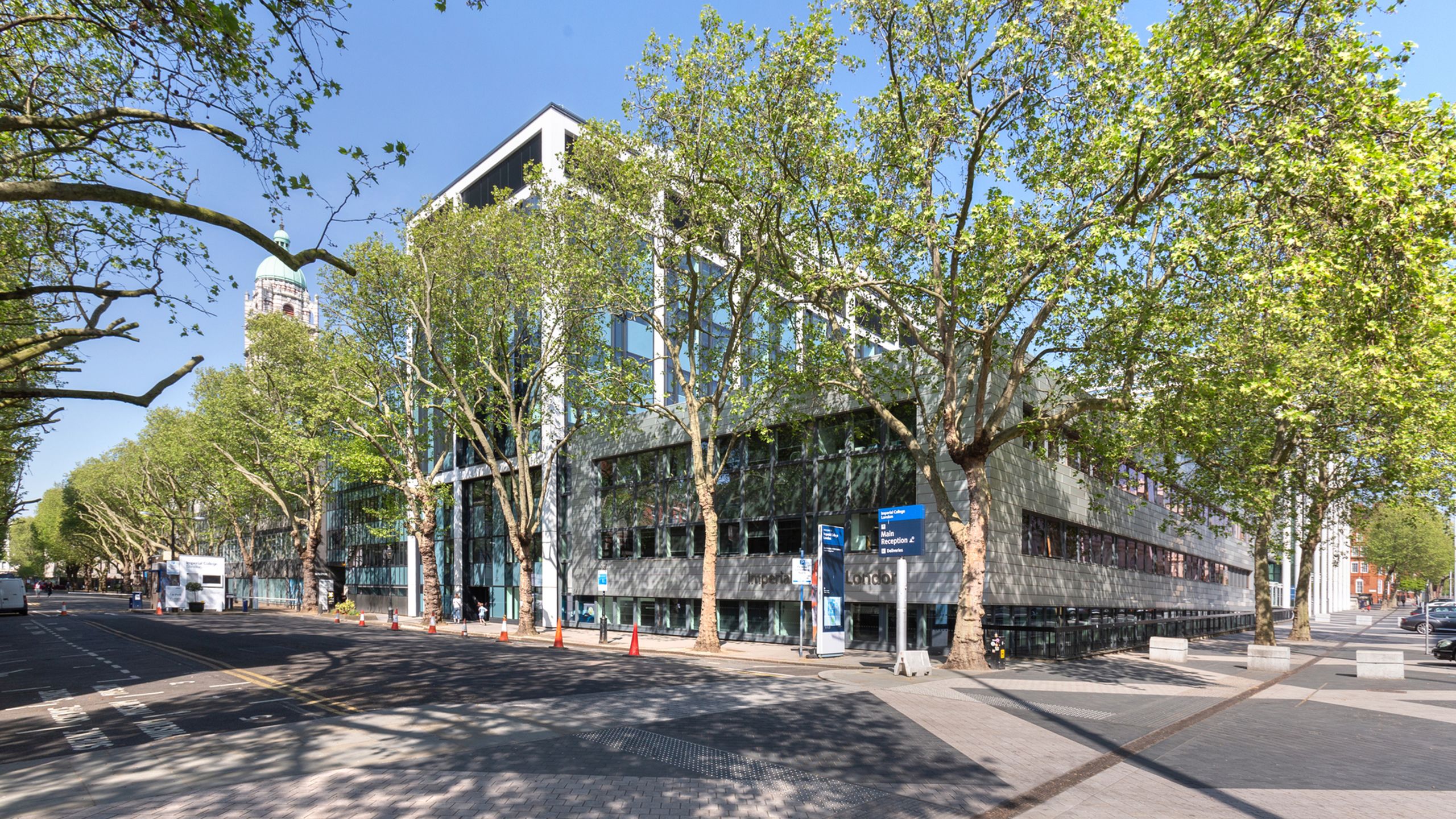
All large institutions risk becoming more complex, confusing and unclear over time. This is particularly true of the public realm - the spaces shared by all.
In 2018, Imperial set out an ambitious long term vision to make the campus environment the best it can be for staff, students and visitors.
The South Kensington Masterplan, developed in consultation with more than 550 members of the College community, provides a flexible framework for the Campus’ future development and growth, with a focus on the campus’ public realm.
Revitalised green space
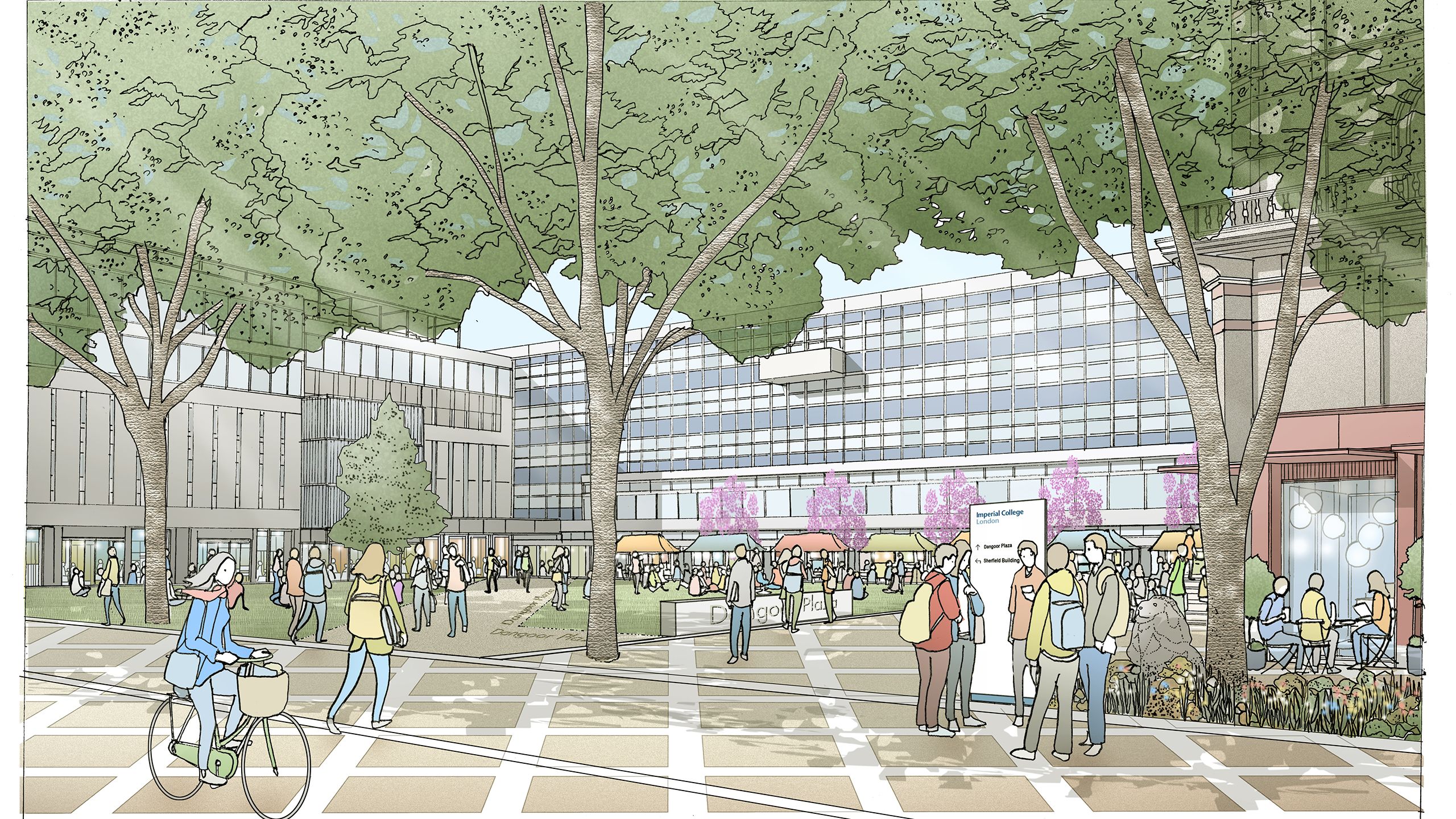
A gift from the Dangoor family and The Exilarch Foundation is supporting the reinvigoration of outdoor space at the heart of Imperial’s South Kensington Campus.
The gift will fund the development of a new plaza surrounding the Queen’s Lawn and the Queen’s Tower.
Stretching from the Sherfield Building and the Central Library to the Skempton and Chemistry Buildings, Dangoor Plaza will open up the existing space to create a welcoming quadrangle which will enhance the Queen’s Lawn, providing an inviting, comfortable green space to allow for both spontaneous and planned activities for staff and students year-round.
The new Dangoor Plaza and Queen’s Lawn area will create over 250 square metres of extra green space.
The revitalised area will include new landscaping and space for a new piece of iconic sculptural art.
David Dangoor CBE said: “Our family has a long history in South Kensington and many of us are also Imperial College alumni. We are proud to be able to play a role in improving this focal space for students and staff to enjoy.”
The gift for Dangoor Plaza forms part of The Exilarch’s Foundation’s wider support with a far-reaching impact across the College.
This includes funding an interdisciplinary cancer research centre in the Roderic Hill Building at the South Kensington Campus, which is driving advances in cancer prevention, diagnosis and treatment.
The foundation has also lent critical support for new educational initiatives at The Invention Rooms, Imperial’s pioneering community and innovation space at White City, allowing the College to build new and innovative ways to work with local people to develop their entrepreneurial projects.
Striking new artwork
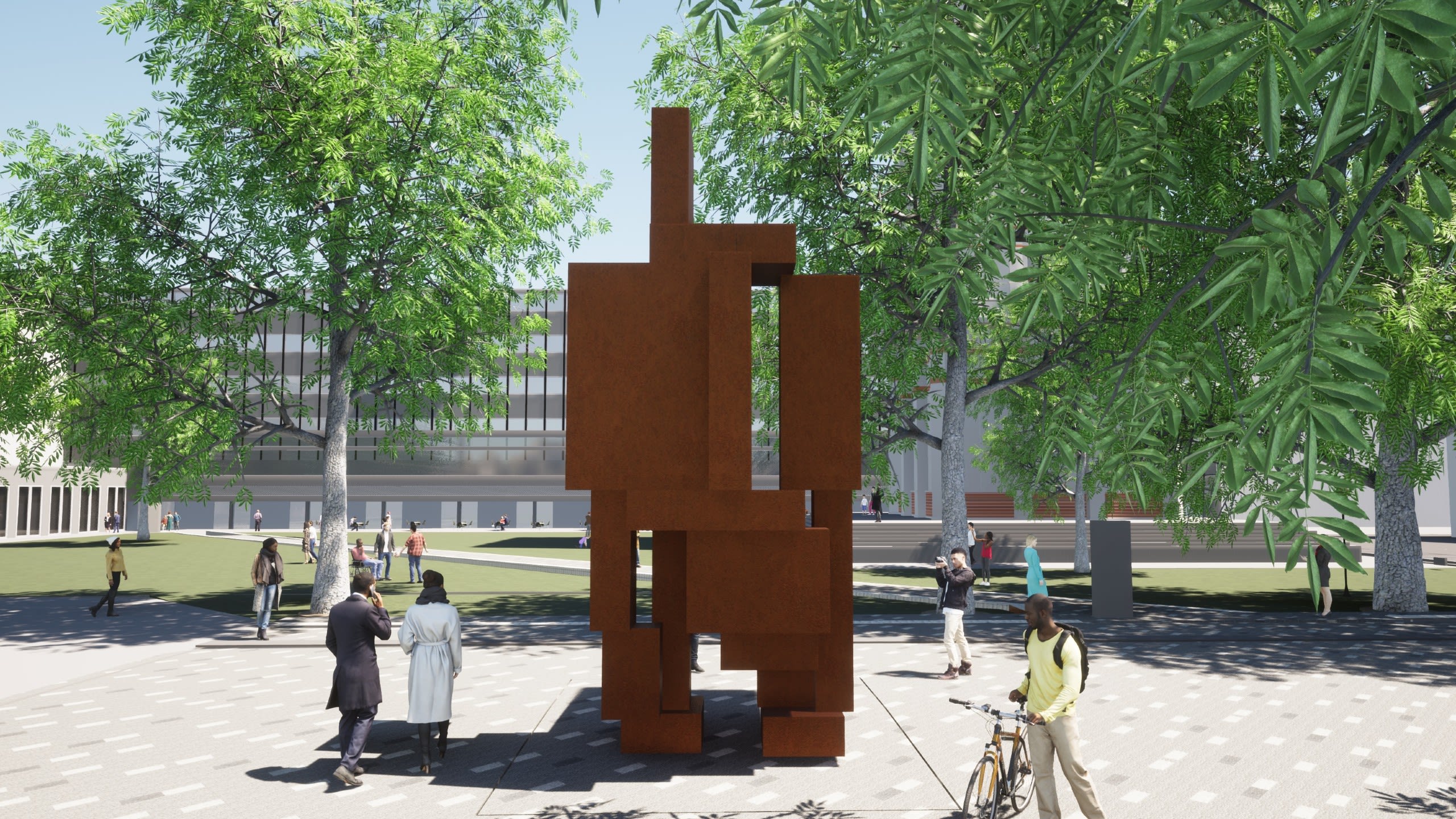
A focal point of Dangoor Plaza will be a new work of sculpture by world-renowned artist Antony Gormley, gifted by alumnus Brahmal Vasudevan (Aeronautical Engineering, 1990) and his wife Shanthi Kandiah.
The sculpture will occupy a central position on Imperial College Road - drawing in visitors and providing a point of interest and intrigue to the College’s enhanced public spaces around Dangoor Plaza.
The 6m high work, called ALERT, will use stacked and cantilevered blocks of weathering steel to evoke the human form. This material naturally forms a stable oxide coating and will take on a deep orange rust-like appearance.
Speaking on the sculpture, Antony Gormley said: “Through the conversion of anatomy into an architectural construction I want to re-assess the relation between body and space. Balancing on the balls of the feet while squatting on its haunches and surveying the world around it the attitude of this sculpture is alive, alert and awake.”
Gormley’s previous works include the Angel of the North in Gateshead, Another Place on Crosby Beach in Liverpool and the large-scale public sculpture installation Event Horizon, first displayed in London and later in in New York, downtown São Paulo and Rio de Janeiro.
Brahmal Vasudevan, who graduated in Aeronautical Engineering in 1990, is Founder and CEO of private equity firm Creador. His previous support includes £1.25 million to establish the Brahmal Vasudevan Multi Terrain Aerial Robotics Arena in the Department of Aeronautics.
Brahmal Vasudevan said: “I am deeply proud of my connection to Imperial and have fond memories of my time on campus as a student. I share the College’s vision for a vibrant public space, and am proud to bring this iconic, world class piece of art by Antony Gormley to the heart of campus. The inspiration arose from my idea of bringing about a collaboration between Antony as a leading English artist with this great English university.”
The sculpture is expected to be installed in summer 2022.
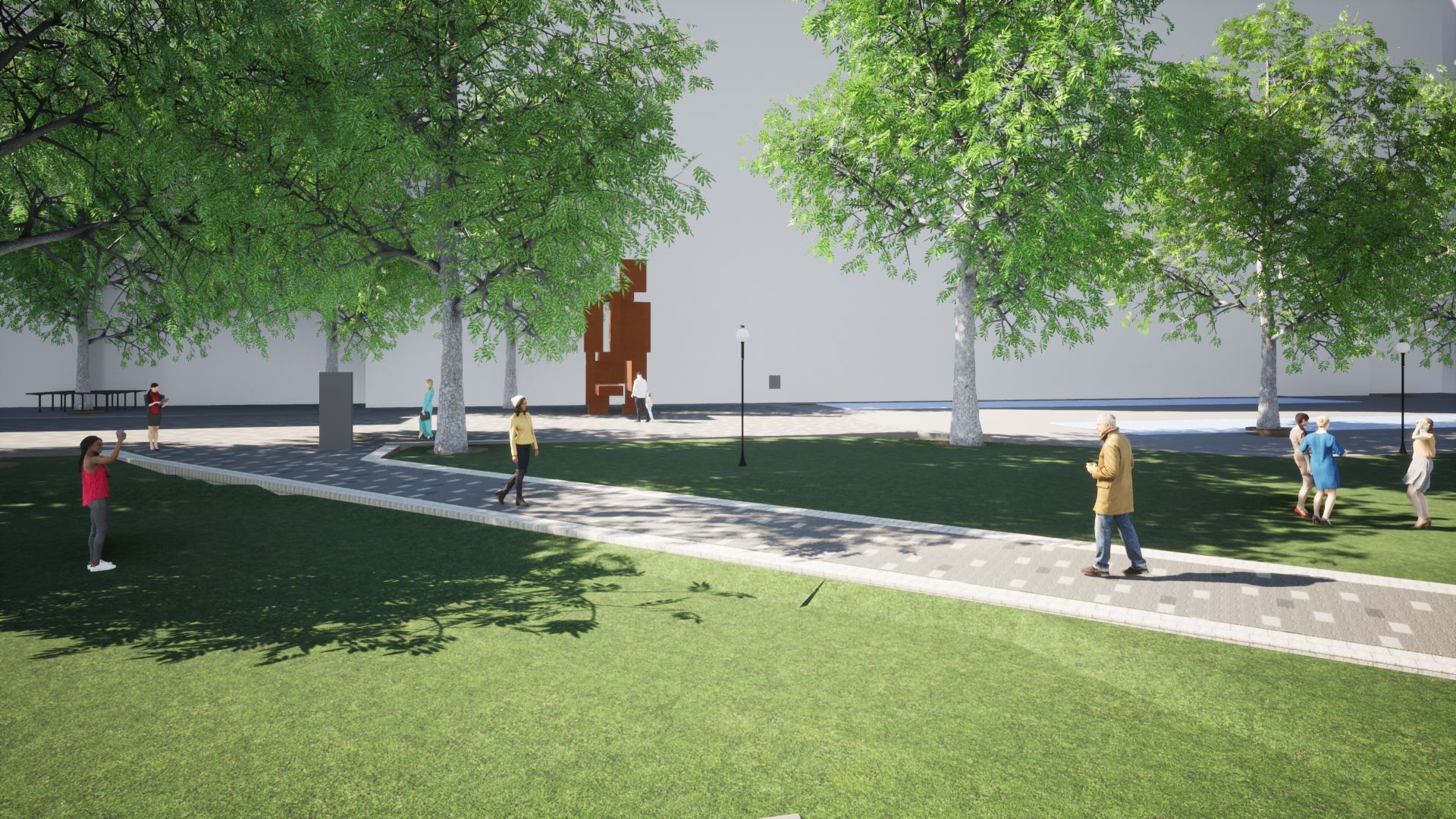

Antony Gormley
Antony Gormley
Restoring the Queen’s Tower
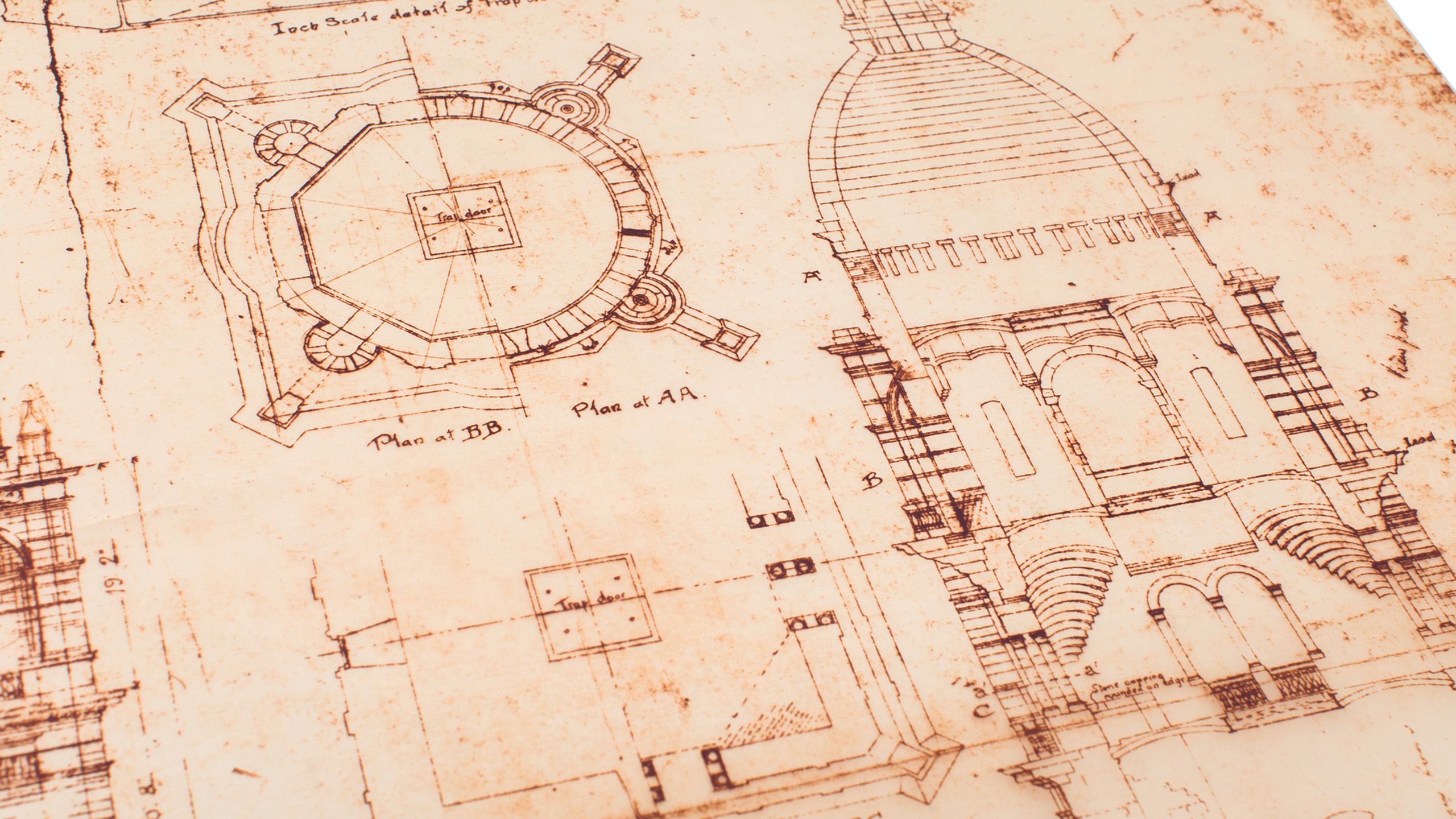
The Queen’s Tower, which can be seen from across London, has become an internationally recognised symbol for Imperial College London.
It has its roots in Imperial’s predecessor, the Imperial Institute, which was built to mark Queen Victoria's Golden Jubilee in 1887. Designed by T E Collcutt in the neo-renaissance style, the Imperial Institute was 700 feet long with a central tower (the Queen's Tower) and smaller towers at the east and west ends.
In the 1960’s the Imperial Institute, not adaptable for the requirements of modern science and technology, was demolished to make way for Imperial College London’s expansion. The then-modern buildings that replaced them were designed to deliver world-class science, directly serving Harold Wilson’s promise to utilise the 'white heat of the technological revolution’.
However there was opposition to the demolition, led by the Poet Laureate and great supporter of Victoriana, John Betjeman. As a compromise, it was decided to retain the central tower. Since then it has been in the custody of Imperial College London.
The College will soon begin an essential restoration programme on the Queen’s Tower, which will include replacing the copper on the Tower’s domes, the flat roofs and the lead flashings as well as to clean and repair the stonework and windows.
The College has begun to prepare for these works, which are due to commence in January 2022.
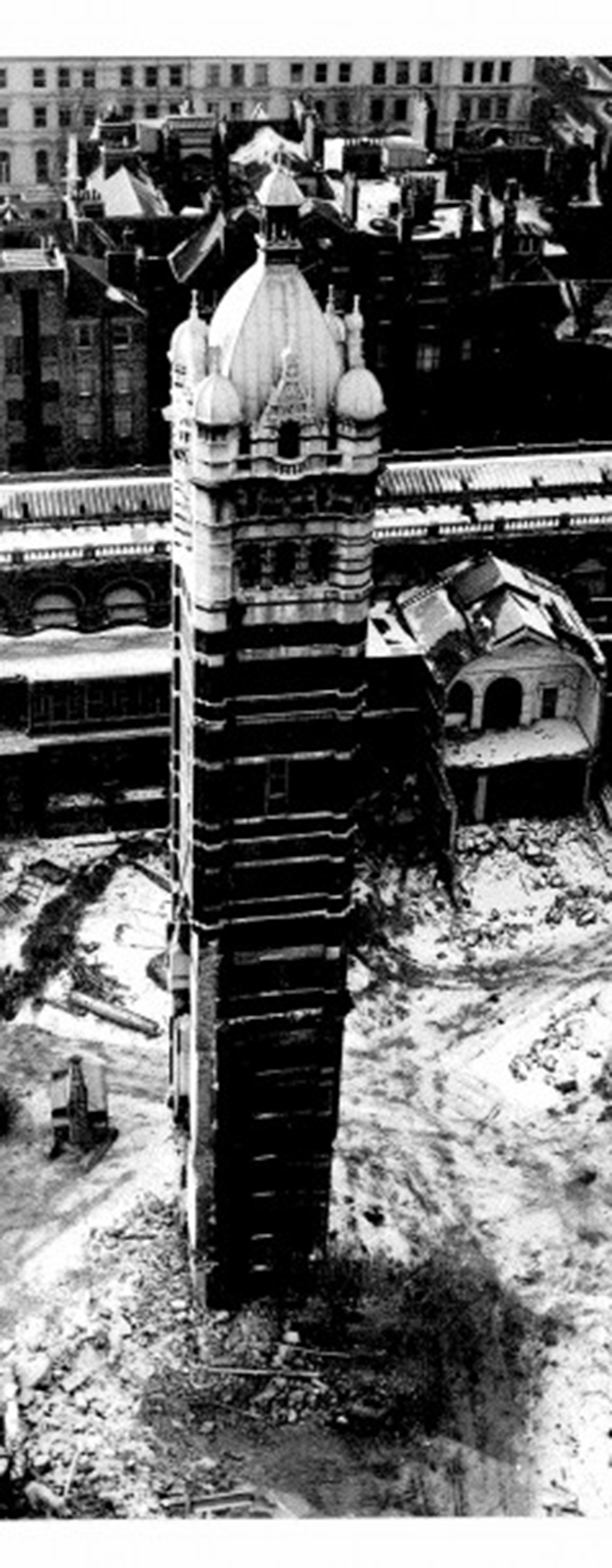

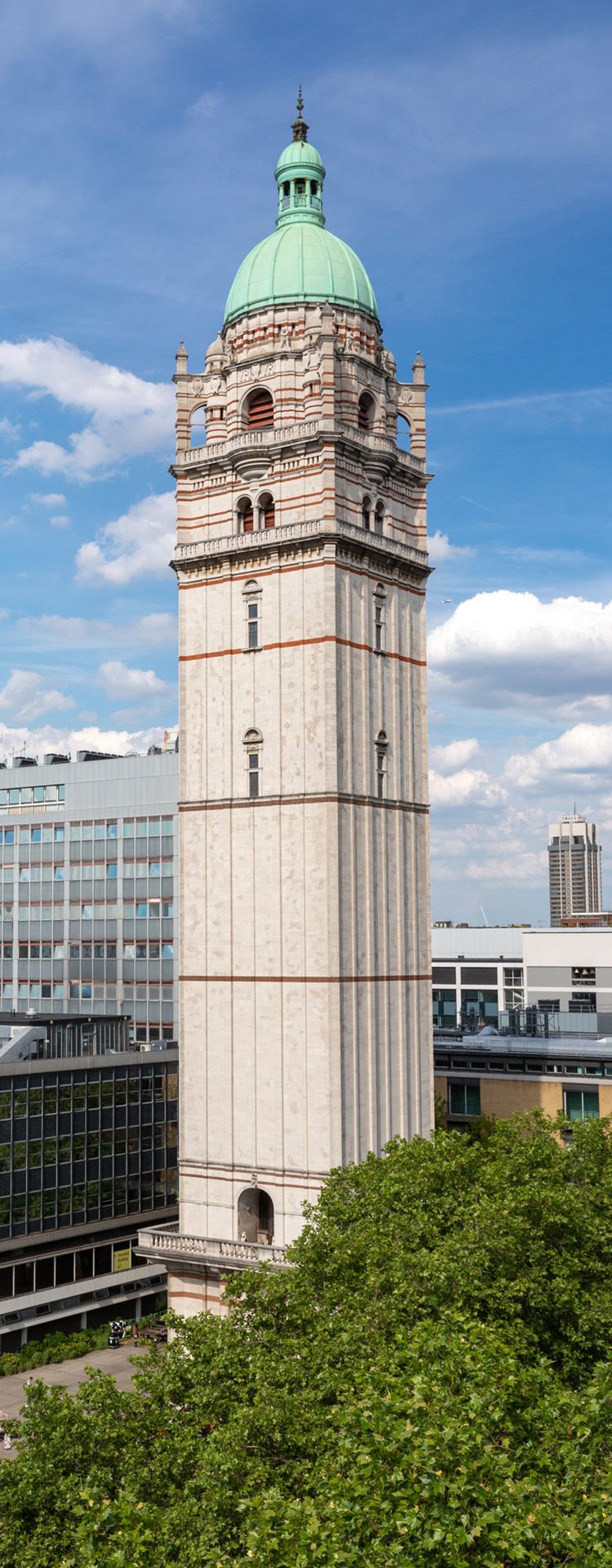

Innovative, multidisciplinary learning
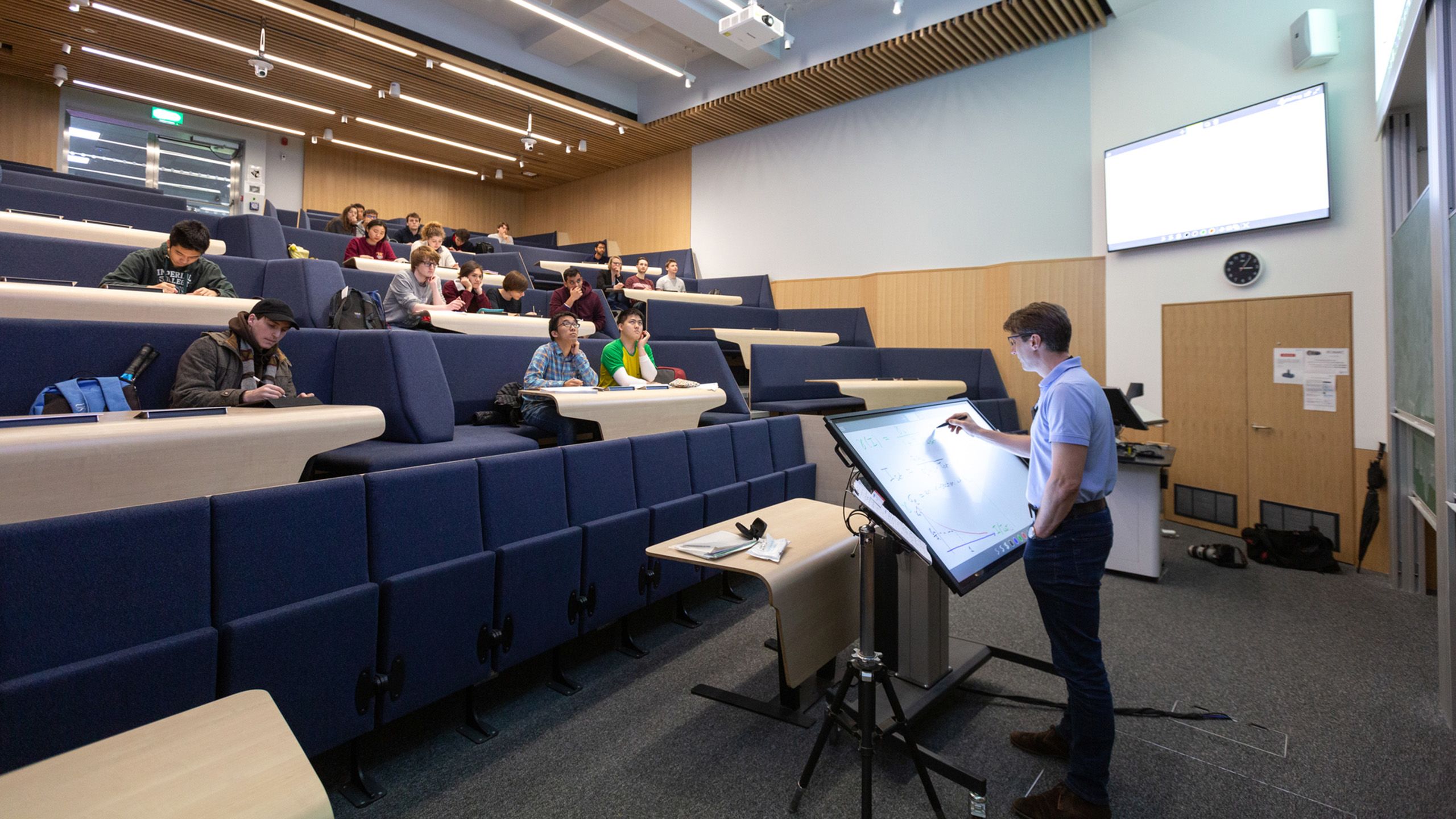
Imperial has invested millions of pounds in the development of new flexible, modern education spaces at South Kensington Campus to support the College’s world class teaching.
The developments include redesigned and refurbished classrooms, renovated lecture theatres, and upgraded study spaces in locations across the campus.
The refurbishments have brought deteriorated and underused spaces back into service and have been designed to provide maximum flexibility to support a wide range of different teaching methods.
Floors 5 and 6 of the Chemistry Building, previously home to laboratories now located at Imperial’s White City Campus, have been transformed into flexible education space for up to 480 students. The refurbished space boosts the amount of space available for independent learning and can also be used for examinations, project breakouts and small group teaching.
This new, shared active learning complex includes three flexible classrooms, two technology-enhanced project breakout areas and an independent learning room. There are also 20 adaptable rooms with writable desks and wall surfaces to facilitate collaborative problem solving and active learning. These novel rooms have walls that can be quickly and easily removed to meet the changing needs of the timetable - such as for examinations - across the year at very low cost.
Floor 4 is currently being refurbished in collaboration with Imperial College Union and undergraduate and postgraduate student representatives from five departments around College. When complete, the floor will include zones for relaxing, eating, socialising and independent study for up to 290 students.
RCS1, next to the Sir Alexander Fleming Building, will also house new and innovative teaching spaces for School of Medicine students. A multimillion pound investment by the College will create versatile teaching spaces to support a variety of different programmes and class sizes. Moveable partitions, furniture, and technology will flex to enable a wide range of activities, from laboratory experiments to collaborative learning and group work.
Bold new research
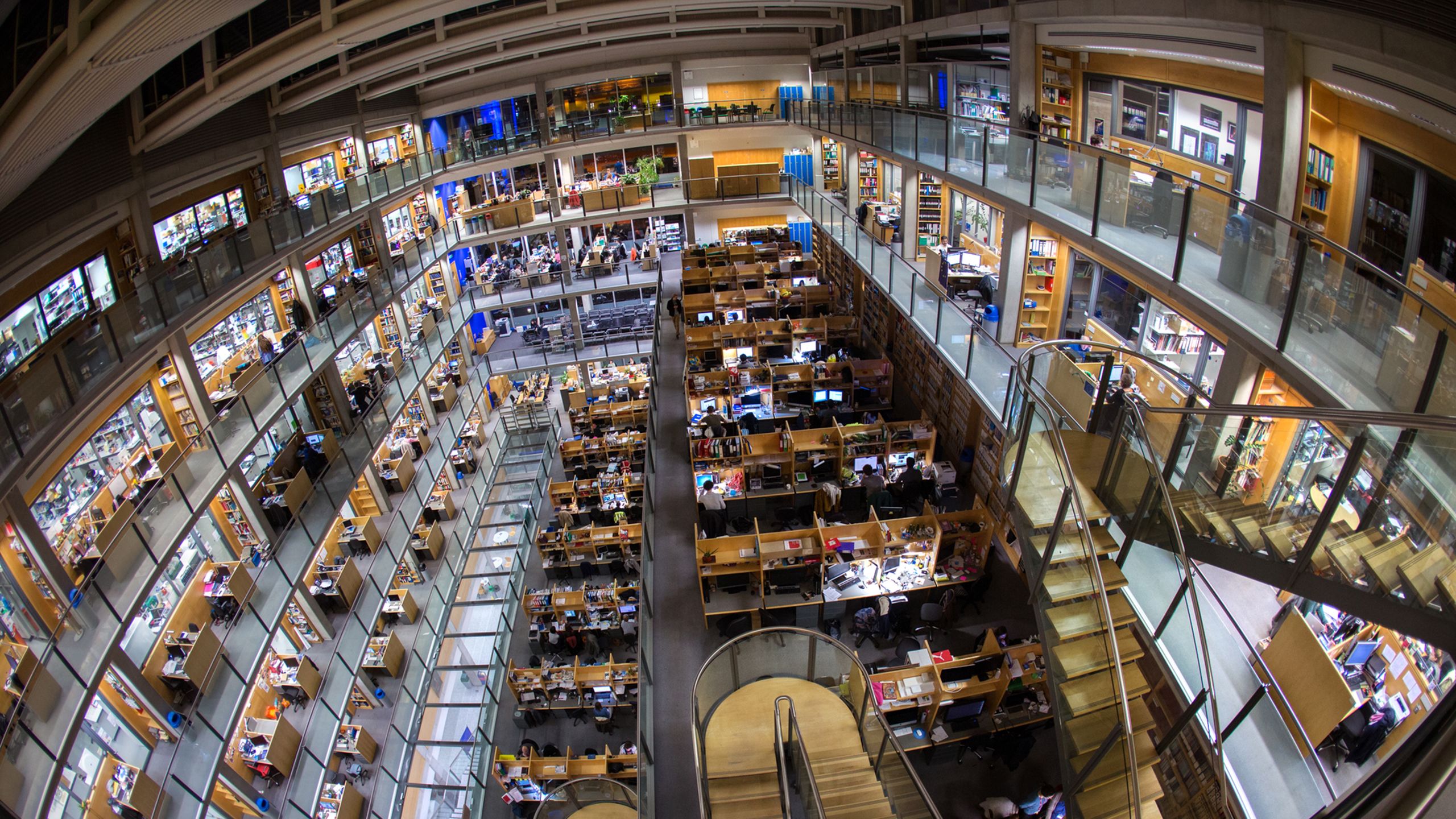
South Kensington Campus is home to world-leading research, which continues to grow and expand.
This includes Imperial's newest Global Challenge Institute - a brand-new interdisciplinary research initiative focused on infection research and education.
The Institute of Infection is headquartered in the Sir Alexander Fleming Building on Imperial College Road, where it is drawing together world-leading expertise from every corner of the College to innovatively address global challenges posed by infectious disease.
Imperial has a long and renowned history in infection research. The Institute builds on this legacy, bringing medical, engineering, natural and economic sciences together to turn fundamental discoveries into interventions that will save and improve lives around the world.
Working across disciplines, with clinical and industry partners, and patients, the Institute will apply our expertise and knowledge in ways that bring real-world benefit, driving the creation of new treatments, tools, interventions and technologies for use in both clinical and non-clinical settings.
Working with students
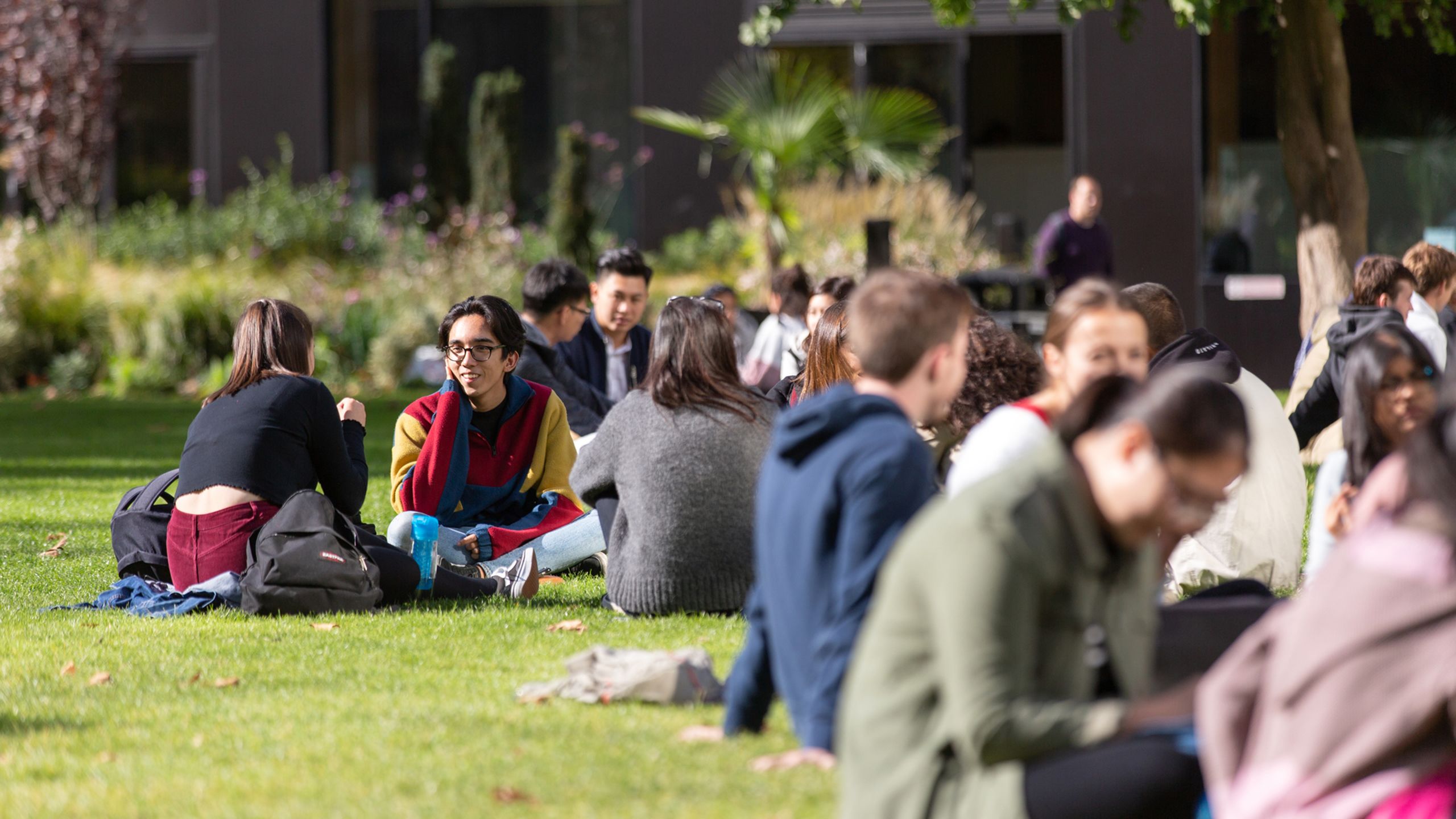
Imperial is working closely with its community to continue to identify new opportunities to improve the spaces around campus.
Launched in 2019, The President's Community Fund is supporting projects that provide or improve spaces across Imperial’s campuses, including South Kensington.
The fund has £1m available each year for the next five years to support projects to enhance College spaces to suit our interactions post pandemic and to have a lasting impact on the College community, and particularly encourages collaborative proposals co-created by staff and students.